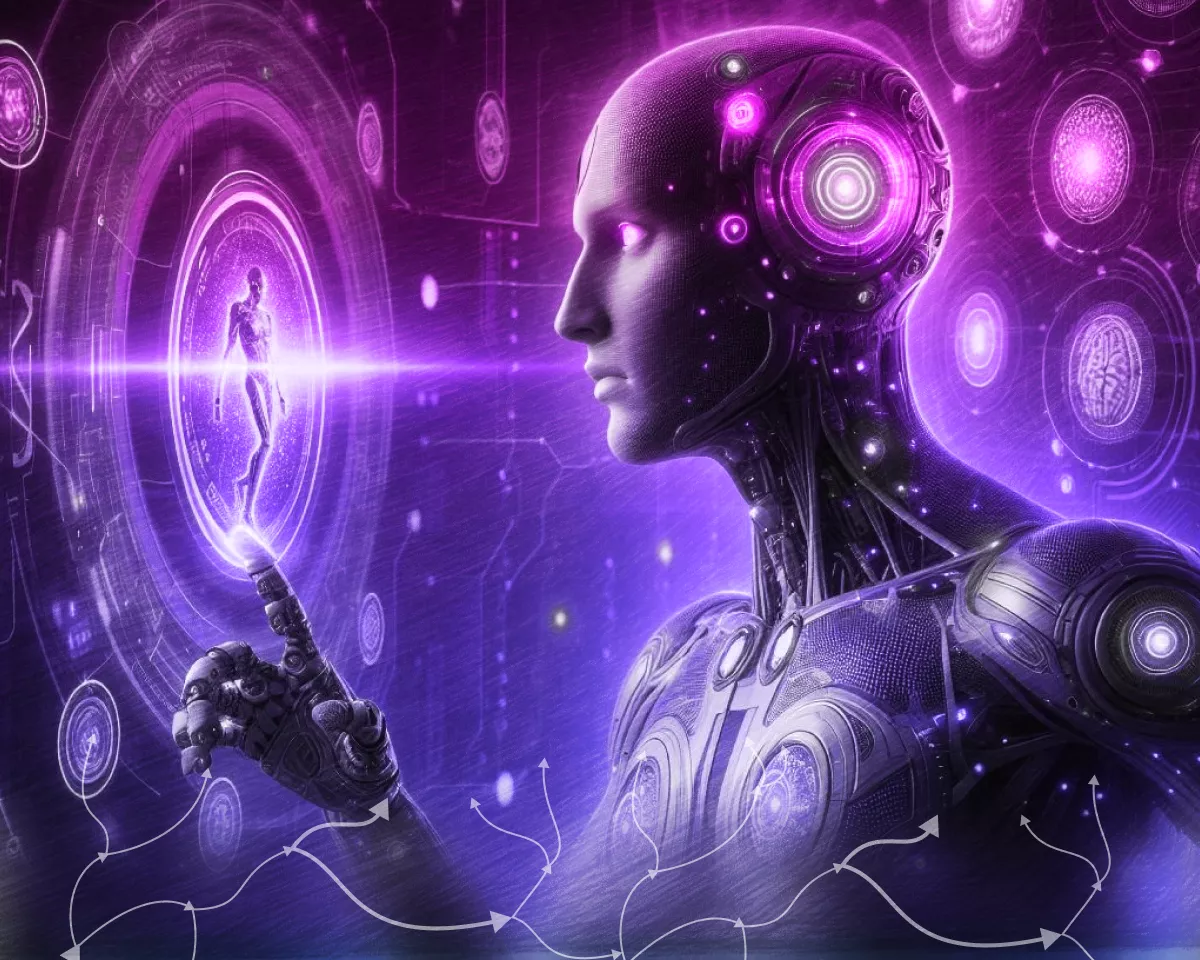
The post The Biggest Changes To Expect As Web2 Evolves To Web3 appeared first on Coinpedia - Fintech & Cryptocurreny News Media| Crypto Guide
As the internet transitions from Web2 to a decentralized future known as Web3, it’s all set to revolutionize concepts of data privacy, governance and the way people do business and earn revenues. Web3 promises to be a more advanced version of the world wide web that prioritizes the needs of its users above those of the most dominant technology giants. Rightly, it has been hailed as a way for internet users to take back control of their data and turn the tables on the likes of Amazon, Google, Facebook et al.
It remains to be seen if Web3 will spell the end for those internet giants. More likely, they’ll find a way to appease their users by embracing Web3 themselves. But even if that happens, it means the implications of Web3 will be enormous.
One of the great promises of Web3 is that it will provide businesses with the ability to implement digital services in a way that satisfies the demands of their users for privacy and convenience. Organizations that embrace this concept will likely be rewarded via new business models, some of which have already flourished in the Web2 era. However, these models will evolve in a way that’s more equitable, rewarding providers while also giving users a share of ownership. The days when internet giants could exploit their user’s personal data will become a thing of the past. Moreover, these new business models will also recognize and reward the creative role of digital content creators.
Embrace The Change Or Fall By The Wayside
While new digital services providers will clearly embrace the opportunity to disrupt the status quo using Web3, today’s existing Web2 internet giants will also be motivated to support new ideals around decentralization. After all, many Web2 companies are already keen to identify new ways to stimulate growth. Netflix, for instance, is a prime example of a legacy internet giant that’s struggling to grow due to its stagnating user base.
Enterprises are naturally driven to deliver great customer experiences and they will undoubtedly be keen to cater to those users who’re seeking a better experience while retaining sovereignty over their data. As this demographic grows, Web2 companies will either learn to live with Web3, or slowly but surely find themselves becoming irrelevant.
Those that don’t want to wither away will do well to get up to speed with the growing trend around decentralized applications. Some of these dApps have positioned themselves as alternatives to existing services. For instance, Audius is a decentralized music streaming platform that’s similar to something like Spotify, while Lens is a protocol for building decentralized social media networks. These platforms both provide a basic service proposition that’s similar to what’s offered by their Web2-based rivals, only that embrace decentralization in a way that ensures their users retain control over their data.
Then there are other dApps that will provide entirely new benefits that are derived from the attributes that are entirely unique to Web3. A good example of this might be dApps focused on supply chain transparency, decentralized finance applications that allow anyone to borrow, lend and invest, or digital asset ownership that’s enabled by non-fungible tokens (NFTs) and digital wallets.
DApps are also set to have a big impact on the “Internet of Things”. The unique thing about Web3 protocols is their executable and autonomous nature – unique characteristics that enable them to work in tandem with connected devices, sensors and IT systems. This is one of the most interesting elements of Web3, because IoT data remains largely untapped by existing Web2 applications. By utilizing IoT data in a trustless way, with more control over data ownership, we can create less centralized systems with greater accountability and transparency, perhaps leading to a new era of intelligent autonomous integration.
As Web3 slowly emerges to replace centralized Web2 infrastructure, a new set of values and use cases will evolve in digital services. The basic concept will remain the same. We will start with the need to satisfy some problem or goal. We respond with an appropriate service. Then we build out the user experience. Where things will differ, however, is that Web3 services will cater to different expectations that reflect our evolving societal values. Web3 will also offer new techniques and tools that enable greater sustainability and a greater choice.
Decentralized Control
One idea that’s certain to advance with Web3 is the respect for user data sovereignty. One of the fundamental promises of Web3 is that users can retain control over their data and decide who accesses it without the threat of censorship.
One company that’s working to provide this is tomi, which is building an alternative, decentralized infrastructure for the internet that’s owned by the people. With tomi, users will provide the server infrastructure that’s necessary to host the next generation of Web3 dApps and services and mine cryptocurrencies. Tomi sees a future where Web3 is hosted by millions of micro data farms that form a kind of decentralized cloud infrastructure. Users will be able to buy one of its customized, easy to setup MP1 servers, or simply acquire a stake in one, represented by an NFT. They’ll then be able to provide this infrastructure to host various Web3 applications that require decentralized hosting, earning rewards for doing so.
Ultimately, tomi envisages a world with millions of users who all possess small computational units that combine to generate the processing power equivalent to multiple data centers, providing a truly decentralized infrastructure for Web3. This will solve several problems. Because tomi’s infrastructure is made up of millions of micro servers, if one machine goes down it will not cause any problems, meaning no outages or downtime. It also prevents censorship by both governments and corporations, as there will be no easy way for them to take content offline. That said, tomi’s DAO-based governance will ensure that the community is still able to vote to remove certain kinds of unwanted content from Web3, such as child pornography or terrorism-related materials.
New Payment Models
Web3 will also allow for novel ways of paying for things using cryptocurrencies. We know already there is a growing subset of digital currency fans who’re using crypto like Bitcoin and Ethereum to make purchases both online and in the real world. Crypto can support other innovative ideas too. For instance, the financial technology startup Twig has hit upon the idea of letting users trade their second hand clothes and electronics devices and get cryptocurrencies and NFTs in return.
Twig describes itself as a “bank” that aims to cater to those who’re conscious about sustainability and anti-hoarding. Rather than keep hold of such items, they can exchange their clothes and electronics for crypto and use those tokens to pay for other goods. For now, Twig is focused on its home market in the U.K. but ultimately it wants to expand its model globally.
Such new payment methods could have big implications for the wider e-commerce business, along with crypto-based loans being used to pay for products online.
Rewards For Digital Content Creators
For too long, digital assets have been unfairly commoditized by Web2 platform providers, especially in the music and photography industries. New tokenization technologies such as NFTs promise to give these creators greater control over the content they create, allowing them to be rewarded more fairly for their creativity. As a result, we can expect new value chains to flourish, with pockets of exciting new content that coalesces into something far greater than the sum of its parts.
Blazing a trail with this idea is Looking Glass Labs, a startup that’s looking to enable new revenue and asset-based royalty streams through its innovative NFT architecture. Its studio House of Kibaa (HOK) is the creator of a metaverse world for NFTs that can exist across multiple blockchains.
HOK is the brains behind the ingenious GenZeroes, an NFT-based film and comic book series that relies on blockchain technology and its user base for funding. Fans of the series acquire NFTs that provide them with exclusive access to the GenZeroes films and comics and allow them to have a say in the evolution of its storyline, as well as other benefits. This ensures that its content creators are fairly rewarded, without having to hand over the bulk of their revenues to some Web2-based platform that agrees to host and distribute it.
Looking Glass Lab’s other projects showcase other ways through which content creators can generate new revenue streams. Its play-to-earn NFT game Overlords also allows users to earn token rewards for continued engagement, interaction and participation. Meanwhile, Pocket Dimension is a metaverse-based digital distribution service that provides a stunning 3D virtual environment where brands and other creators can create, share, play, learn and prosper from their creativity.
Inclusion Through DAOs
Another key element of Web3 is the idea of decentralized autonomous organizations and the community-based governance they enable for any kind of project or initiative. So-called DAOs are unique to Web3 and they bring power to the people in a way that was never possible before. Take the issue of climate change, which is something that affects everyone. As much as people may care about this issue, they have very few opportunities to participate in discussions on how to deal with it.
Earth Fund DAO is hoping to change this, using Web3 technologies to distribute funding to environmentally-friendly projects according to the desires of its community. It’s aiming to leverage Web3 to accelerate progress on climate change by supporting an array of community chosen initiatives, such as carbon removal. Users who provide funds to the DAO will be rewarded with 1EARTH tokens, which provide holders with voting rights and a direct say in how their funds should be used.
Enhanced Platform Engineering
Web3 will provide genuinely new computing capabilities that software engineers will be able to leverage to create more imaginative and efficient solutions for their digital services. No doubt, many of these new capabilities will prove to be essential, because Web3’s respect for its user’s data privacy will lead to a draining of the data lakes that fuel artificial intelligence projects, predictive analytics, targeted advertising and so on.
A good example of this kind of project is the Ocean Protocol, an open-source project that makes it possible for individuals to exchange and monetize their data. Based on the Ethereum blockchain, Ocean Protocol must acquire data tokens in order to access user’s information. The idea is to provide startups and researchers with a way to access the data necessary to fuel their projects, while rewarding the owners of that data and ensuring they retain control of it.
Conclusion
Web3 is still a young ecosystem but it’s one that’s rapidly growing and evolving. In the last few years, there has been a considerable jump in interest in technologies such as blockchain, cryptocurrency, NFTs and the concept of decentralization. We’ve seen major advances in Layer-2 scaling solutions that will be required to support Web3 on a global scale, and lot of experimentation with ideas around decentralized governance, data sovereignty and digital identities.
We’re still in the early days of creating a better and more equitable internet, but as we continue to refine these technologies, the future of Web3 looks increasingly bright. It’s impossible to say how quickly this future will evolve, as there will be unexpected problems and yet more revolutionary ideas along the way.
That said, there are many people alive today who can still recall living in a world where there was no Internet. Web2 has since come along and radically transformed their lives. If Web3 can live up to its promises, its effects could prove to be just as dramatic.

 2 years ago
223
2 years ago
223














 English (US) ·
English (US) ·